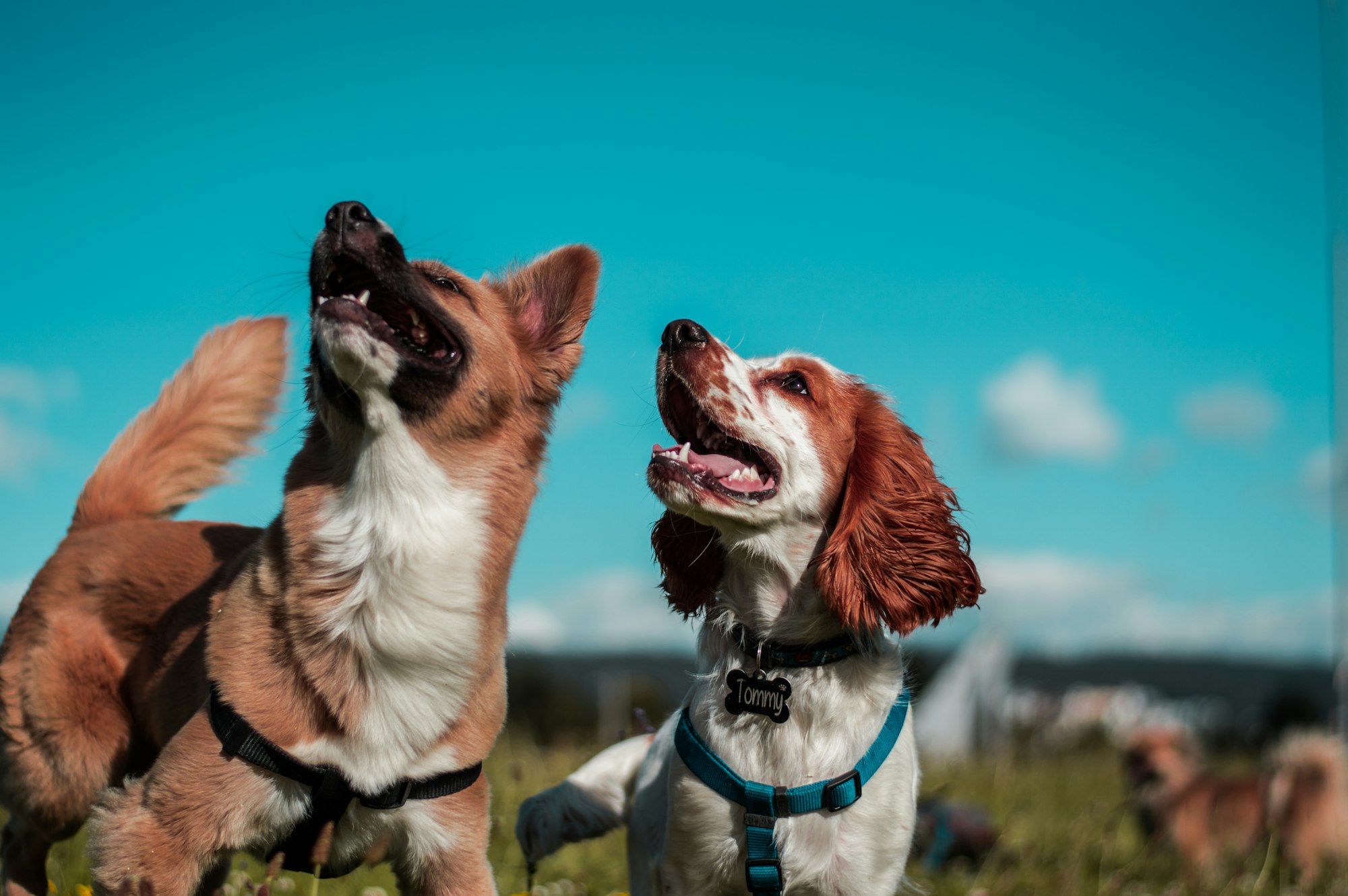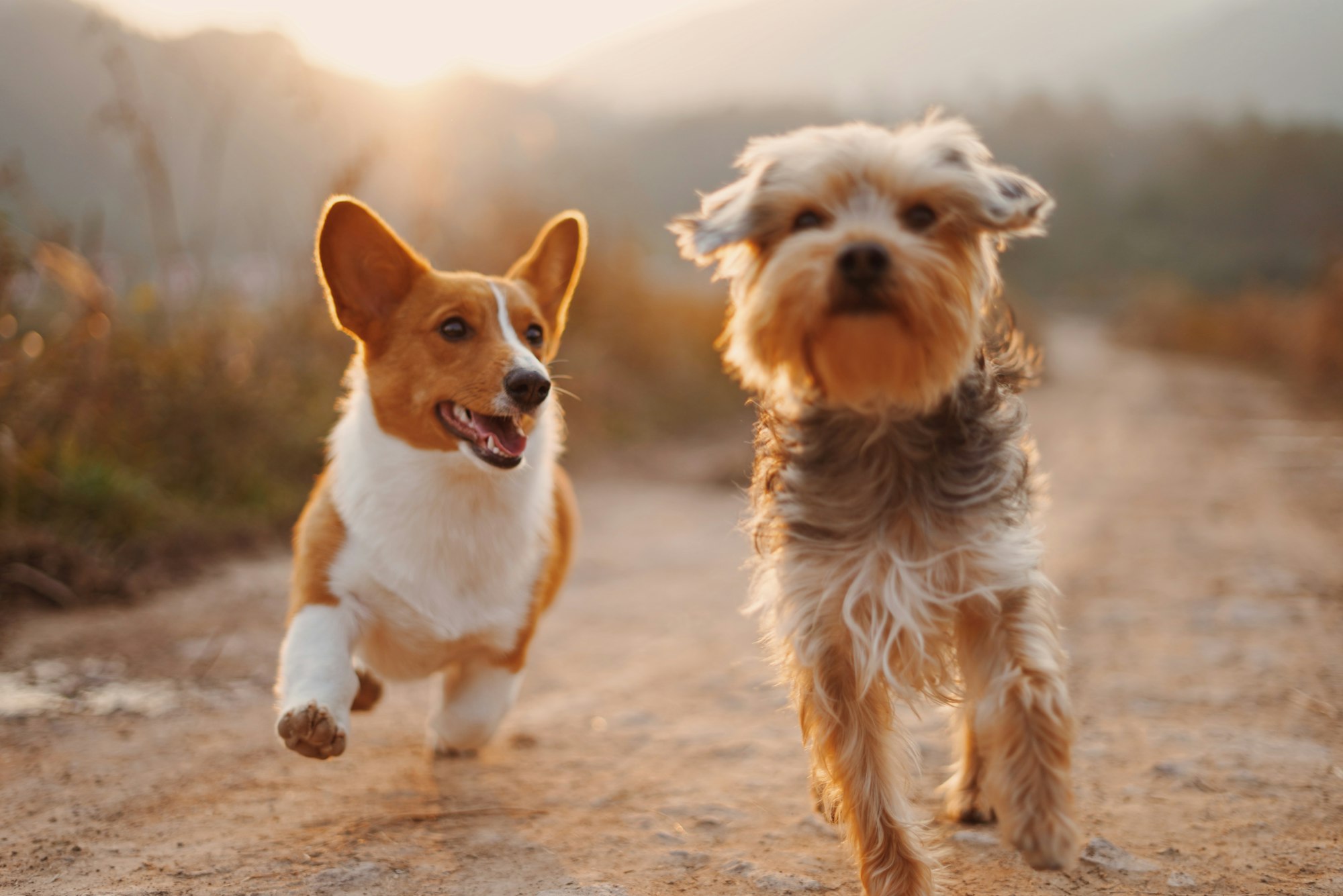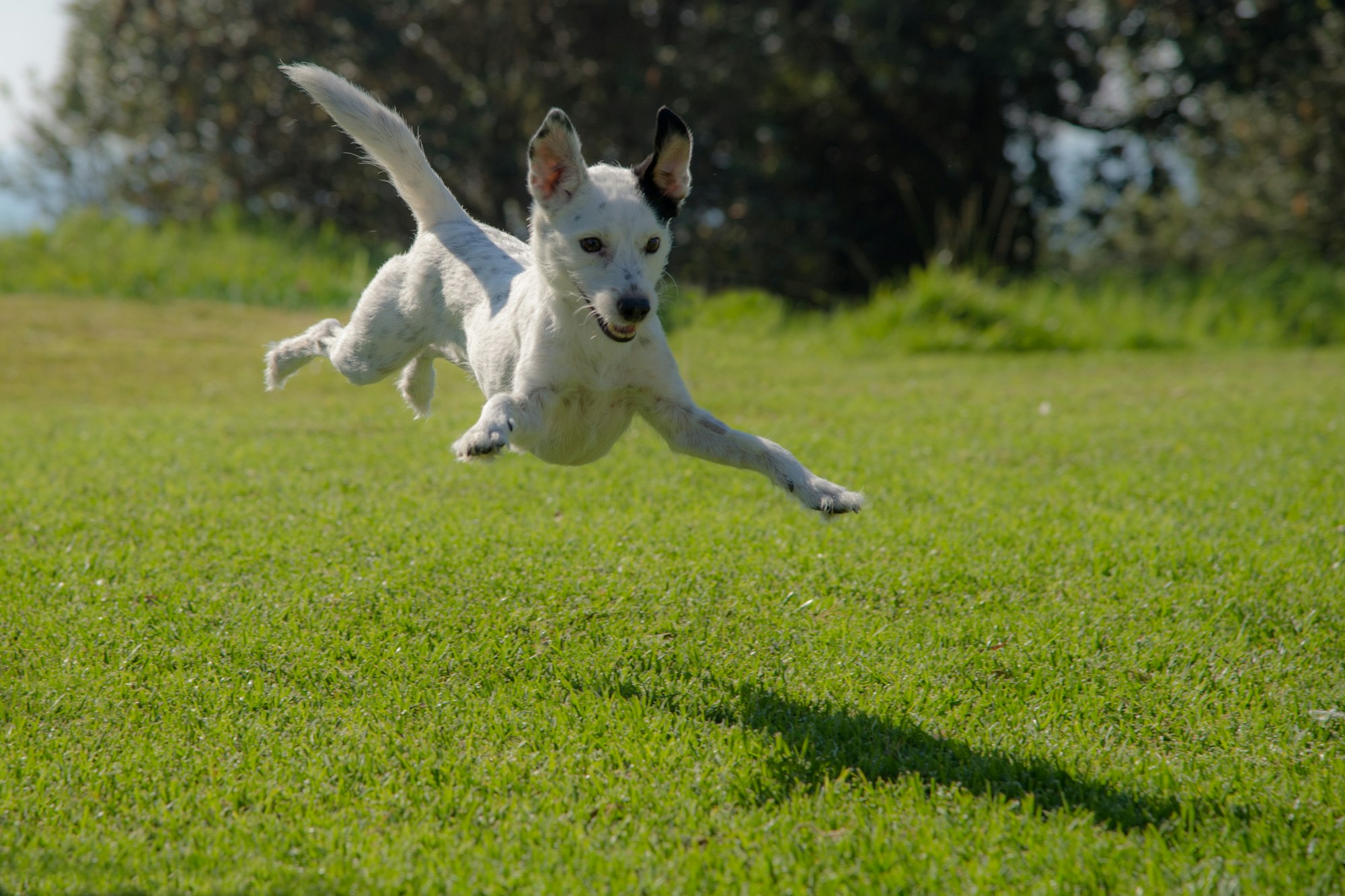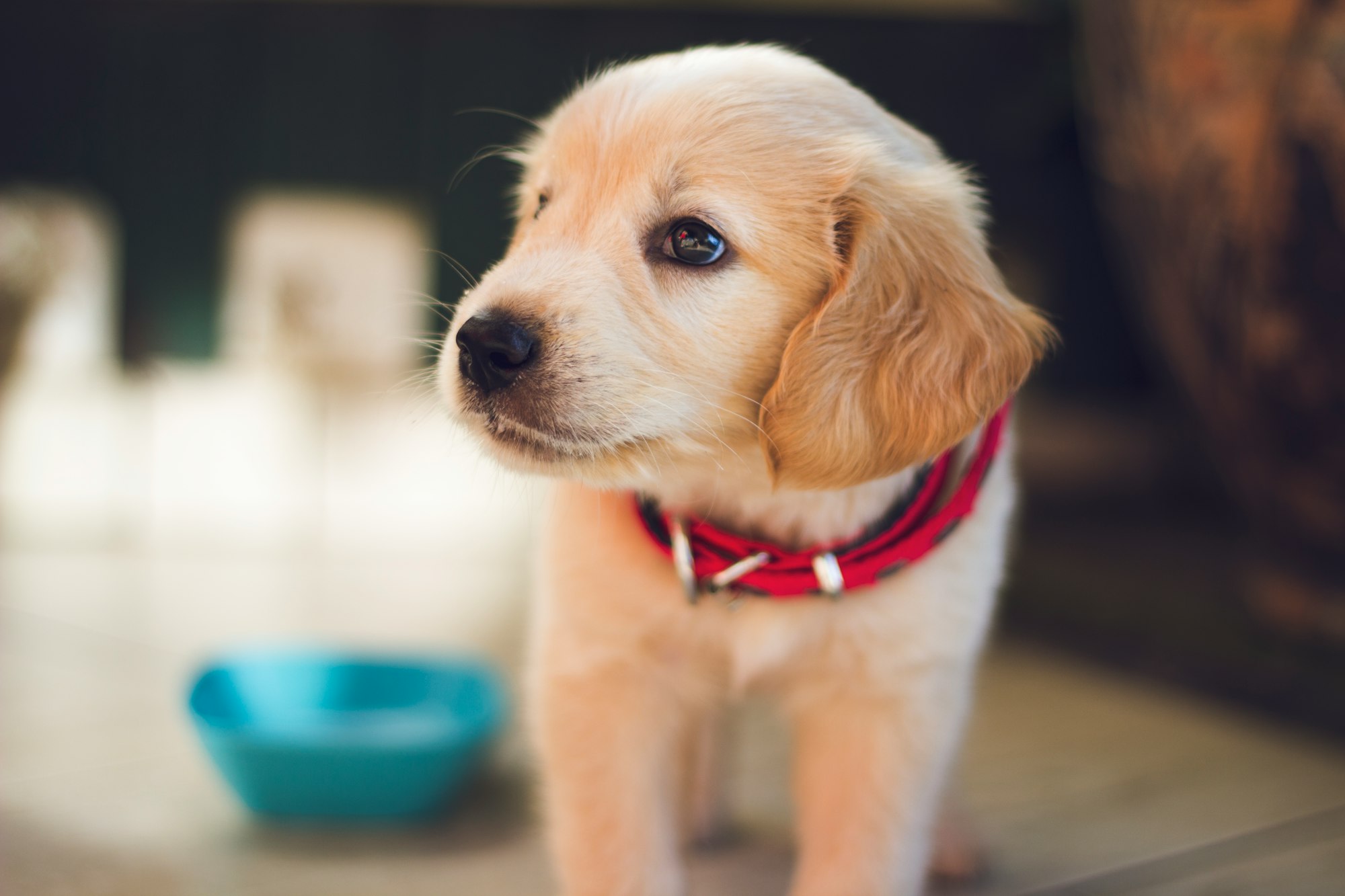Selecting the perfect harness for your canine companion can prove to be a more intricate process than it may initially seem. The realm of dog harnesses is vast and multifaceted, offering an array of styles, materials, and specialized designs tailored to different purposes and needs. In this exploration, we will delve into the intricate world of dog harnesses, dissecting the diverse options available to find the one that will best cater to the unique needs and comfort of your beloved furry friend.

Harness Types: A Brief Overview
There are several types of dog harnesses available, each with its own set of benefits.
No-Pull Harnesses
No-pull harnesses are popular among dog owners who have dogs that tend to pull on the leash. They distribute the force across the dog's body, minimizing strain on the neck and back. Often, these harnesses have a front clip attachment, discouraging pulling by directing the dog to the side when they tug.
Back-Clip Harnesses
These are the most common type of dog harnesses. The leash attachment is located on the dog's back, providing comfort and ease of use. It's especially suitable for calm dogs that don't pull much during walks.
Step-In Harnesses
Perfect for skittish dogs, step-in harnesses allow your dog to simply step into the harness. Two loops encircle their legs, and it fastens at the back. They're simple, effective, and don’t involve anything going over a dog’s head.
Tightening Harnesses
As the name suggests, this harness tightens slightly when the dog pulls. This sensation discourages them from pulling, making walks more enjoyable. However, it's essential to ensure it doesn't tighten too much to cause discomfort.
Materials Matter
When exploring types of dog harnesses, material can make a world of difference.
Nylon
Lightweight and affordable, nylon harnesses are easy to clean and come in various colors. However, if your dog has sensitive skin, monitor for any signs of chafing.
Leather
Leather harnesses are sturdy and durable. With time, they even mold to fit your dog’s body, ensuring a comfortable fit. They are, however, on the pricier side.
Mesh
Ideal for small breeds or dogs in hot climates, mesh harnesses are breathable and light. They distribute pressure evenly, making them comfortable for prolonged wear.
Making The Right Choice
Determining which harness is best boils down to understanding your dog.
Consider their behavior during walks, their size, any health concerns, and the environment you'll be walking in.
The Impact of Fit and Adjustability
Why Fit Matters
The importance of ensuring a snug fit for your dog's harness cannot be overstated.
An ill-fitting harness can cause a multitude of problems, ranging from chafing and skin irritations to the dog slipping out of it, much like what happened with Sarah and Luna.
Adjustable Harnesses: The Gold Standard
One solution to the fit problem is adjustable harnesses. These harnesses come with multiple points of adjustment, ensuring that as your dog grows or gains/loses weight, the harness can be modified to fit them comfortably.
Remember, a harness that's too tight can restrict movement and even affect your dog's breathing. Conversely, a loose harness is a safety risk.
Harness Maintenance and Care
Regular Checks
Even the best of harnesses can undergo wear and tear over time. It's crucial to inspect your dog's harness regularly for signs of damage: frayed seams, broken buckles, or any signs of it stretching out of shape.
Cleaning the Harness
The cleaning method largely depends on the material. Nylon and mesh harnesses can often be machine-washed (always check the label!), while leather harnesses require special cleaning products to ensure they remain supple and don't dry out.
Storing When Not In Use
When the harness isn't in use, especially if it's a leather one, store it in a cool, dry place away from direct sunlight to prolong its lifespan.
Specialized Harnesses: Meeting Unique Needs
Puppy Harnesses
Puppies have different needs compared to adult dogs. Their bones and muscles are still developing, so it's essential to opt for a harness that offers gentle control without hindering their growth. Look for soft, adjustable, lightweight harnesses specially designed for puppies.
Harnesses for Active Dogs
For dogs that accompany their owners on hikes, runs, or other athletic adventures, specialized harnesses offer added support. They often come with reinforced stitching, handle grips, and reflective strips to ensure safety during low-light conditions.
Senior Dog Harnesses
As dogs age, they may develop health issues such as arthritis or back problems.
Harnesses designed for senior dogs offer added padding and support, ensuring comfort and minimizing strain.
Harnesses for Dogs with Medical Conditions
If your dog has a specific medical condition, such as a tracheal collapse, it's crucial to consult with a vet about the best type of harness. Certain conditions require harnesses that distribute pressure in a particular manner to avoid exacerbating health issues.

Factors to Remember When Shopping
Test Before Buying
Whenever possible, it's always best to have your dog try on a harness before purchase. This ensures an immediate assessment of fit and comfort.
Read Reviews
Online reviews can offer insights into durability, ease of use, and whether the product lives up to its description. Look for feedback from dog owners with similar breeds or needs as yours.
Consider the Return Policy
Especially if purchasing online, check the return policy. In case the harness isn't the right fit or doesn't meet expectations, it's handy to know you can exchange or return it.
Harness Accessories and Additional Features
Reflective Strips and Lights
Safety during nighttime or low-light conditions is paramount. Many harnesses come equipped with reflective strips that glow when hit by light, making your dog visible to motorists. Some even have slots for attachable LED lights for added visibility.
Pockets and Pouches
For those who enjoy long hikes or extended outdoor adventures with their dogs, some harnesses come with built-in pockets or pouches. These are handy for storing small items like waste bags, treats, or even your keys.
Built-in ID Tags
A few harnesses offer a feature where you can have your dog's name and your contact information stitched directly onto the harness or on a metal plate. This can act as an additional precaution if your dog were to get lost.
Handle Grips
Especially useful for larger dogs or dogs with mobility issues, handle grips allow the owner to assist their dog in various situations. Whether it's helping them into a car, guiding them over an obstacle during a hike, or quickly grabbing them in case of emergencies, a handle can be an invaluable feature.
Trends in Dog Harness Design
As pet care evolves, so do the products associated with it. Here are a few trends in dog harness design:
Eco-friendly Materials
With growing consciousness about sustainability, many manufacturers are producing harnesses made from recycled or eco-friendly materials, ensuring both your dog's comfort and a smaller carbon footprint.
Customizable Designs
In the age of personalization, some brands offer customizable harnesses where dog owners can choose colors, patterns, and even add accessories to match their dog's personality.
Smart Harnesses
Incorporating technology, some of the latest harnesses come with built-in GPS trackers, activity monitors, or even health tracking features. These harnesses sync with smartphone apps, allowing owners to keep tabs on their dog's location and health metrics.

The Importance of Training with a Harness
Gradual Introduction
Any new accessory, even if it's for their comfort, can be strange and even intimidating for a dog. When introducing a new harness, it's essential to do it gradually. Let your dog sniff and get familiar with it. Place it near their bed or play area, making it a part of their environment. Reward them with treats and positive reinforcement when they show curiosity.
Harness Training Sessions
Just like leash training, harness training is a process. Start with short sessions indoors. Put the harness on your dog and let them wear it around the house. Praise and treat them for behaving well with it on. Gradually increase the duration they wear it until they seem entirely comfortable.
Combining Leash with Harness
Once your dog is used to the harness, attach a leash. Begin with short walks inside or in your backyard. Over time, as your dog gets accustomed to the feel of the harness and leash together, you can venture out for longer walks.
Potential Challenges and Solutions
Escaping the Harness
Some dogs, especially those not used to wearing a harness or those with a knack for being escape artists, might try to wriggle out. Ensure the fit is snug (but not tight) and look for harnesses with anti-escape features.
Chafing and Irritation
If you notice your dog scratching more than usual or see any redness or bald patches, the harness might be causing irritation. Consider a different material, or look for a harness with extra padding in sensitive areas.
Over-dependence on the Harness
While harnesses offer better control, especially for dogs that pull, it's essential to balance harness walks with proper leash training. A harness should be a tool, not a permanent solution to behavioral challenges.
Harness vs. Collar: A Recap
While we've delved deep into the world of harnesses, it's worth revisiting the harness vs. collar debate briefly.
- Safety: Harnesses distribute pressure across the body, reducing strain on the neck.
- Control: For dogs that pull or are easily distracted, harnesses offer better control.
- Health considerations: For dogs with respiratory or tracheal issues, harnesses are often the recommended choice.
However, collars have their place, especially for well-trained dogs or for quick outings.
Harness Transition: Old to New
As time goes on, you might find the need to transition from an old harness to a new one. Here's how you can make the change smoother:
Parallel Use
Before completely transitioning, let your dog wear both the old and new harnesses around the house, separately. This helps in making the new harness a familiar accessory, lessening any resistance or discomfort when you finally make the switch.
Positive Reinforcement
As with any new experience for your dog, associating the new harness with positive experiences is crucial. Use treats, praises, and their favorite toys to create a positive association.
Observant Transition
Once you begin using the new harness for walks, be observant. Look for signs of discomfort, and adjust the fit as needed. Remember, every harness has its unique design and might sit differently on your dog.

Taking Harnesses Beyond Walks
Adventure and Sports
Harnesses aren't just for regular walks. If you and your dog indulge in more adventurous activities, like hiking, trekking, or even dog sports like agility training, specialized harnesses can make the experience better. Look for harnesses with rugged designs, extra padding, and enhanced durability.
Car Safety
When traveling with your dog in a vehicle, safety is paramount. There are harnesses designed explicitly for car travel. These harnesses secure your dog in place, ensuring they don't move around too much and are protected in case of sudden stops.
Keeping Up with Trends and Innovations
The world of pet accessories, including harnesses, is ever-evolving. Stay updated with the latest innovations. Whether it's harnesses with cooling technology for summer months, or those integrated with smart features like health monitoring, there's always something new on the horizon.
A Few Parting Tips
- Consistent Checks: As durable as they might be, no harness lasts forever. Regularly check for wear and tear.
- Cleaning Routine: A clean harness is not just about aesthetics; it's also about hygiene. Depending on the material, establish a cleaning routine.
- Consult Experts: If ever in doubt about which harness is right for your dog, especially considering health or behavioral concerns, consult a vet or a dog trainer.
Harness Customization: Adding a Personal Touch
Harnesses, while primarily functional, can also serve as an expression of your dog's personality or even mirror your own style.
Personalized Stitching
Many brands now offer the option to stitch your dog's name or a short message onto the harness. Not only does this add a unique touch, but it can also be practical, acting as a form of identification.
Accessory Attachments
From decorative patches to tiny pouches or even charms, there are numerous ways to accessorize a harness. These attachments can be both fun and functional, allowing your dog's harness to stand out in a crowd.
Seasonal Themes
Just as humans have seasonal wardrobes, your dog's harness can change to reflect different times of the year. Think about harnesses with autumnal colors, bright summer patterns, or even festive designs for holidays.
Proper Disposal and Recycling
When it's time to retire an old harness, consider the environment. Some materials, especially certain plastics and metals, can be recycled. Check with local recycling programs or pet stores – some might have specific initiatives for disposing of or recycling old pet gear.
Harnesses and Training: A Synergistic Approach
While harnesses offer better control during walks, they should ideally be used in conjunction with proper training.
Behavioral Reinforcement
If your dog pulls, instead of solely relying on the harness to curb this behavior, use it as an opportunity to train. When they pull, stop walking. Only resume once they've calmed down. This teaches them that pulling doesn't achieve their goal of moving forward.
Harness as a Training Tool
In dog sports or agility training, harnesses can be used to guide dogs through various exercises without putting undue pressure on their neck. Combined with positive reinforcement, this can make training sessions more effective and enjoyable.
Listening to Feedback
As a responsible pet owner, it's vital to be attuned to your dog's feedback. If they resist a harness or seem uncomfortable, don't force it. Instead, try to understand the root cause. It could be the fit, material, or even a past negative experience. Your dog's comfort should always be a top priority.
Beyond the Basics: Advanced Harness Features
While many harnesses cater to general needs, there are harnesses with advanced features that cater to specific situations or challenges.
Multi-Attachment Points
Some harnesses come with multiple leash attachment points. This allows for varied levels of control based on the situation. For instance, a back attachment might be great for a casual walk, while a front attachment can be used in crowded areas where more control is needed.
Weight Distribution Designs
For dogs who assist humans, such as service or working dogs, there are harnesses designed to distribute weight evenly. This ensures that if they are carrying or pulling anything, the pressure is spread out, minimizing potential strain.
Integrated Cooling Systems
For dogs living in or traveling to particularly hot climates, some harnesses come with built-in cooling systems. These might include pockets for cooling packs or materials that reflect heat, ensuring your dog remains comfortable even under the sun.
Harnesses as Medical Aids
For dogs with specific medical needs, harnesses can be more than just a walking aid.
Post-Operative Recovery
Dogs recovering from surgeries, especially those related to mobility, might benefit from specialized harnesses. These can provide support, limit certain movements to aid in healing, and even have pockets for cold or hot packs.
Mobility Support
For senior dogs or those with conditions affecting their mobility, harnesses with built-in slings or supports can be invaluable. They allow owners to assist their pets in standing up, climbing stairs, or getting into vehicles without causing discomfort.
Building a Harness Wardrobe
Just as you might have different outfits for varied occasions, having a selection of harnesses can be beneficial.
- Everyday Harness: Durable and comfortable for daily walks.
- Activity Harness: Rugged and with added features for hikes or runs.
- Travel Harness: Lightweight, easily foldable, and perhaps with features suitable for car or plane journeys.
- Special Occasion Harness: Think about festivals, birthdays, or other occasions where a themed or decorative harness might add to the fun.
The Broader Context: Community Involvement
Harness usage isn't just about individual dog owners. Communities can play a role too.
Harness Libraries
Some communities or local shelters offer "harness libraries" where people can borrow different types of harnesses to try before purchasing. This reduces waste and ensures dogs get the best fit.
Group Training Sessions
Local dog clubs or communities might offer group training sessions where harness usage is taught, ensuring everyone uses them effectively and safely.

Harness Evolution: What's Next?
With continuous advancements in technology and design, who knows where the future of dog harnesses might lead? We might see harnesses with built-in health monitoring systems, AI-powered training aids, or even harnesses tailored to a dog's DNA!
Conclusion:
In our comprehensive exploration of dog harnesses, we delved into various types, from no-pull to step-in designs, and considered material choices like nylon, leather, and mesh. Prioritizing a proper fit and understanding unique requirements, like those for puppies, active dogs, or seniors, is essential. Harnesses also serve special purposes, from adventure to car safety, and can even be personalized for flair.
Regular maintenance, proper training, and keen observation of your dog's feedback are key. With innovations like integrated cooling systems and health monitors, the future of harnesses is promising. Ultimately, the right harness enhances the bond between owner and pet, ensuring comfort and safety on every adventure.
FAQs
- What are the different types of dog harnesses?
- There are various types, including no-pull, back-clip, step-in, and tightening harnesses. Each serves a specific purpose based on your dog's behavior and your walking environment.
- Which material is best for dog harnesses?
- The "best" material varies based on individual needs. Common materials include nylon (lightweight), leather (durable), and mesh (breathable). Consider your dog's skin sensitivity and activity level when choosing.
- How can I ensure a proper fit for my dog's harness?
- A well-fitting harness should be snug but not restrictive. It shouldn't chafe or cause discomfort. Many harnesses offer adjustable straps for a better fit.
- Are there harnesses specifically for puppies or senior dogs?
- Yes, some harnesses are designed for puppies, offering gentle support. Senior dogs might benefit from harnesses with added padding and mobility aids.
- How often should I check and replace my dog's harness?
- Regularly inspect the harness for signs of wear and tear. Depending on usage, material, and overall care, replacement can range from several months to a few years.
- Can a harness help with training?
- Definitely. Harnesses can assist in training, especially for dogs that pull. Combined with positive reinforcement, they can enhance training sessions.
- Are there any tech-integrated harnesses available?
- Yes, the market now offers harnesses with built-in features like GPS trackers, health monitors, and even activity tracking that syncs with smartphone apps.
- What's the difference between harnesses and collars?
- While both serve as attachment points for leashes, harnesses distribute pressure across the dog's body, reducing strain on the neck. This makes them especially suitable for dogs prone to pulling or those with certain medical conditions.
- How can I personalize my dog's harness?
- Many brands offer customization options, from stitched names to attachable charms. You can also choose harnesses based on colors, patterns, or even seasonal themes.
- Why might my dog resist wearing a new harness?
- Dogs might find new accessories unfamiliar or even intimidating. Gradual introduction, positive reinforcement, and ensuring a proper fit can help ease them into using a new harness.




